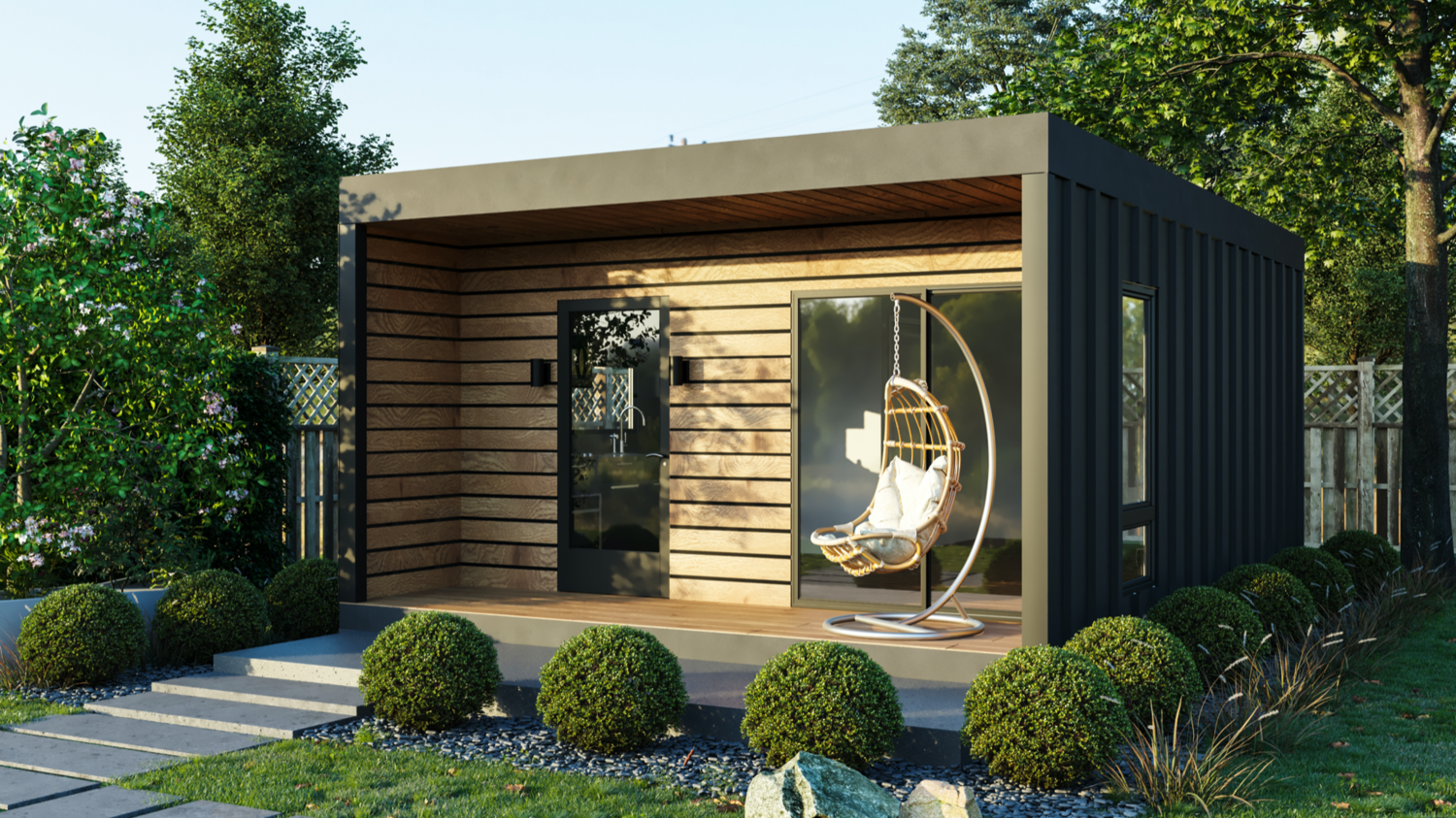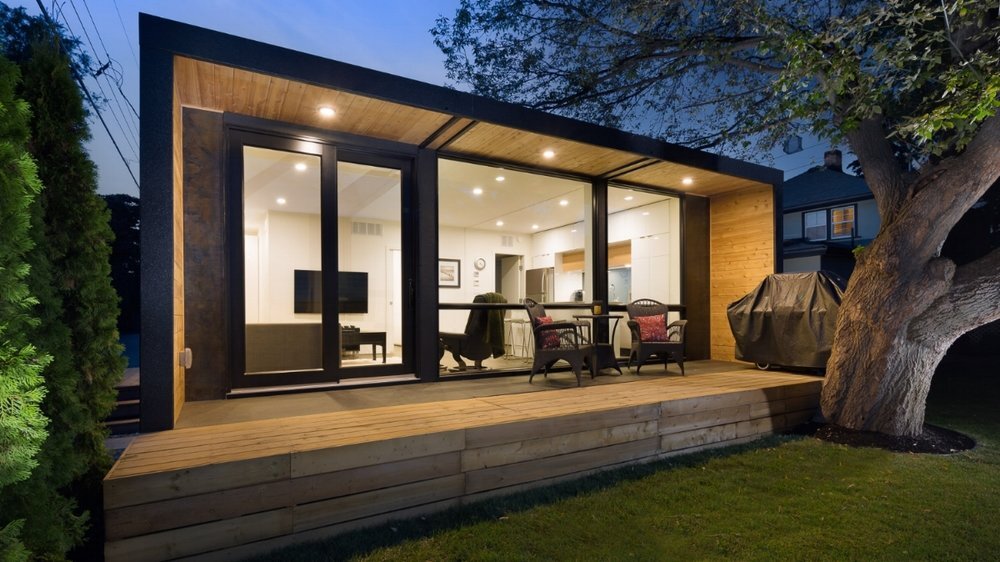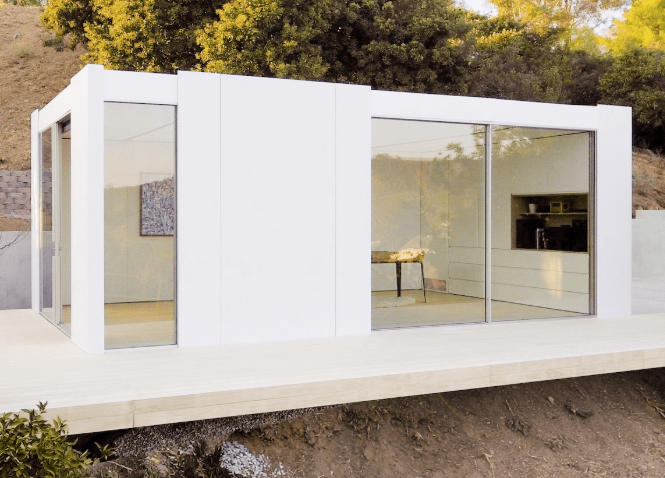Point ADU Financing Review

How Do You Finance an ADU and Why Consider Point?
ADUs, which can also be referred to as auxillary dwelling units, granny flats, or in-law suites, are becoming increasingly popular throughout many parts of the United States. While an ever-increasing number of individuals are using ADUs as a way of generating additional income, combatting housing scarcity, or just increasing the livable space of their property, financing options well-suited for ADUs have been slow to materialize.
Though individuals interested in building an ADU can still finance their project with traditional borrowing products like home equity loans and lines of credit, or even cash, Point offers an alternate, ADU financing option. With features such as no monthly payments, lending amounts up to $350,000, and a lending period of up to 30 years, Point’s lending product is a unique option to traditional borrowing products for your ADU project. In our Point review below, we address questions central to deciding if Point’s home equity sharing product is right for you including, How does Point work? What are the requirements for Point’s home equity sharing? How much money can I receive from Point?
What is Point?
Point is a lending company that gives homeowners cash in exchange for a share of their homes future appreciation (or depreciation). Point’s lending product is a debt-free alternative to more main-stream products such as personal loans, cash out refinances, home equity loans, and home equity lines of credit. In a way, Point creates a partnership with borrowers that allows them to access their equity in their home.
Money borrowed from Point can be used unconditionally and is often used to pay down debts or fund education. Alternatively, we have found that money borrowed from Point can be used to fund an ADU.
Below, our table of key characteristics outlines important information about Point’s home equity-based lending product.
| Maximum Cash Amount | Maximum Borrowing Period | Service Area | Eligibility | Reviews* | |
|---|---|---|---|---|---|
| Point | $350,000 (maximum offer is often 20% of your home’s value) | 30 Years | Select cities in CA, WA, OR, CO. NJ, MA, VA, D.C., FL, NY, MD, PA,IL, MI, MN, AZ, NC and CT, (as of May, 2020) | - Combined property value (home + land) must be greater than $200,000 -Credit score of at least 500 |
4.5 Stars (as of May, 2020) |
*Reviews are based on prior customer reviews and sourced on May 1, 2020. Reviews are based on consumer reviews from Trustpilot
** (Accurate as of May, 2020)
How does borrowing from Point work?
Point’s lending product works by giving individuals money in exchange for equity in the future value of an individual’s home. The percentage of equity that Point receives is determined by factors such as borrower profile, amount borrowed, and the value of the home. Borrowers can repay Point at any time up to the 30-year term. Individuals can repay Point either with cash (or another loan) or through the sale of their home.
The amount to be repaid to Point is made up of the principal amount borrowed plus or minus Point’s share of the home’s appreciation or depreciation. For example, if you were to borrow $40,000 in exchange for 20% equity and your home appreciates by $100,000, you would be responsible for repaying Point $60,000 (principal amount, $40,000, + Point’s share of appreciation, $20,000)
Although there are no monthly payments associated with Point, they do charge a processing fee of 3% - 5% of the investment amount. As such, a co-investment of $100,000 from point would incur a processing fee of $3,000 - $5,000 which is deducted from the cash investment. In this case, the homeowner would only receive $97,000 - $95,0000.
Furthermore, appreciation/depreciation is based on an adjusted home value to compensate for risk. The adjusted value is typically 80% - 90% of the home’s appraised value. In return, homeowners are protected with a capped repayment amount, in the event that their home’s value increases significantly.
Where Does Point Serve?
At the time of publication, only borrowers in certain locations are eligible to borrow from Point. Currently, Point is only available in select areas of California, Washington, Oregon, Colorado, New Jersey, Massachusetts, Virginia, Washington DC, Florida, New York, Maryland, Pennsylvania, Illinois, Michigan, Minnesota, Arizona, North Carolina, and Connecticut. (Accurate as of May, 2020)
Does Point Have Good Reviews?
At the time of publication, Point has an average review of 4.4 out of 5. While this does not entirely indicate that Point may be a good or bad option for financing your ADU project, it is an indicator of past borrowers’ experiences.
How Does Point Compare to Other ADU Lender Types?
Point is unique from traditional lending products such as a home equity loan, home equity line of credit (HELOC), or reverse mortgage for a few reasons. First, unlike traditional loans or lines of credit, Point does not have any monthly payments. In the example below, this would result in a monthly savings of over $2,400.
Second, borrowers and Point share the same interests - an increase in home value. In the event that your home increases in value over the period of borrowing, both you and Point share the benefits. In the event that your home decreases in value, you share in the loss and your repayment amount is less.
Third, Point does not have any requirements on how you must spend your money. Unlike a construction loan, money from Point is available for up-front use. And unlike some home equity lines of credit, there are no restrictions on draw amounts. This makes it well-suited for financing an ADU project
What do the Economics of an ADU Project Financed with Point Look Like?
| ADU Financing With Point | Home Equity Loan | Home Equity Line of Credit | Notes | ||
|---|---|---|---|---|---|
| Appreciation | Depreciation | ||||
| Current Home Value | $1,000,000 | $1,000,000 | $1,000,000 | $1,000,000 | |
| Point Adjusted Home Value | $850,000 | $850,000 | Point calculates appreciation and depreciation from an adjusted home value as low as 80% of your home's appraised value. | ||
| Future Home Value | $2,627,262 | $1,120,000 | Including added value from an ADU +/- market change. ppreciation scenario assumes 3% annual growth | ||
| Home Value Change | $1,627,262 | $120,000 | |||
| ADU Project Cost/ Amount Borrowed | $200,000 | $200,000 | $200,000 | $200,000 | |
| Interest rate | 0% | 0% | 4.00% | 3.75% | |
| Interest Payments | $0 | $0 | $143,739 | $133,443 | Calculated using an amount borrowed of $200,000 for a period of 30 years |
| Point's Share of Appreciation/ Depreciation | $569,542 | $42,000 | Point's equity in your home's future value is dependent on your individual profile, though it can be as high as 80%. In this case we use 35% | ||
| Point Origination Fee | $8,000 | $8,000 | $7,000 | $7,000 | Point charges a one-time servicing fee of 3-5% of the financing amount. In this case we estimate fees at 4% |
| While some banks may waive certain fees, typical fees and costs from a bank can be 2%-5% of the loan amount. In this case estimate fees at 3.5% | |||||
| Total Repayment Amount | $777,542 | $250,000 | $350,739 | $340,443 | At the end of the 30-year term |
Besides Point, How Else Can I Finance an ADU Project?
While the most straight-forward way to finance a new ADU is with cash, that option is not practical for most individuals. Other ways to finance an ADU build include: home equity loan, home equity line of credit, cash-out refinancing, or construction loan.
In addition to Point, other companies that offer alternatives to traditional lending products include:
Similar to Point, these companies allow borrowers to access and trade a share of their equity in their home’s future value for cash however, they all have slight nuances in their eligibility and cost and fee structure. Read a side by side comparison of these home-equity share companies here.




